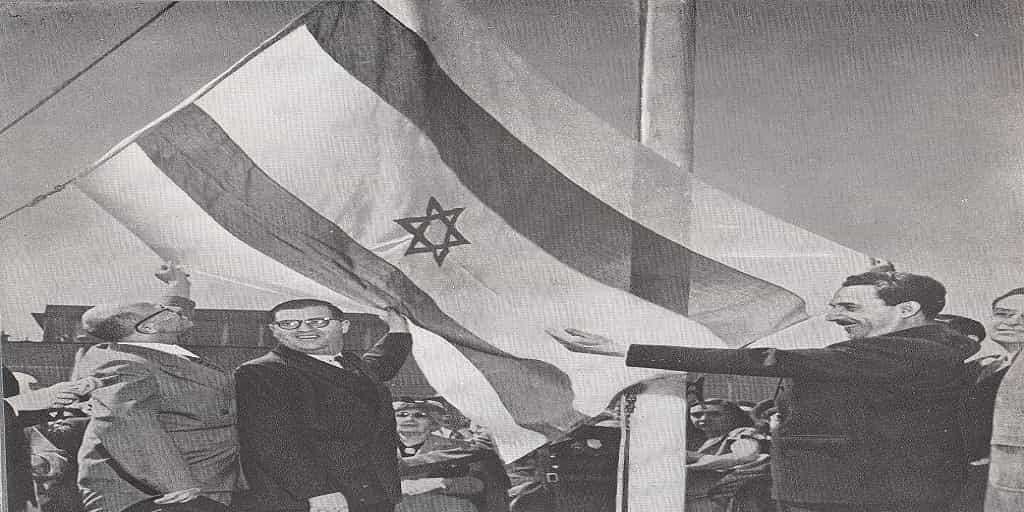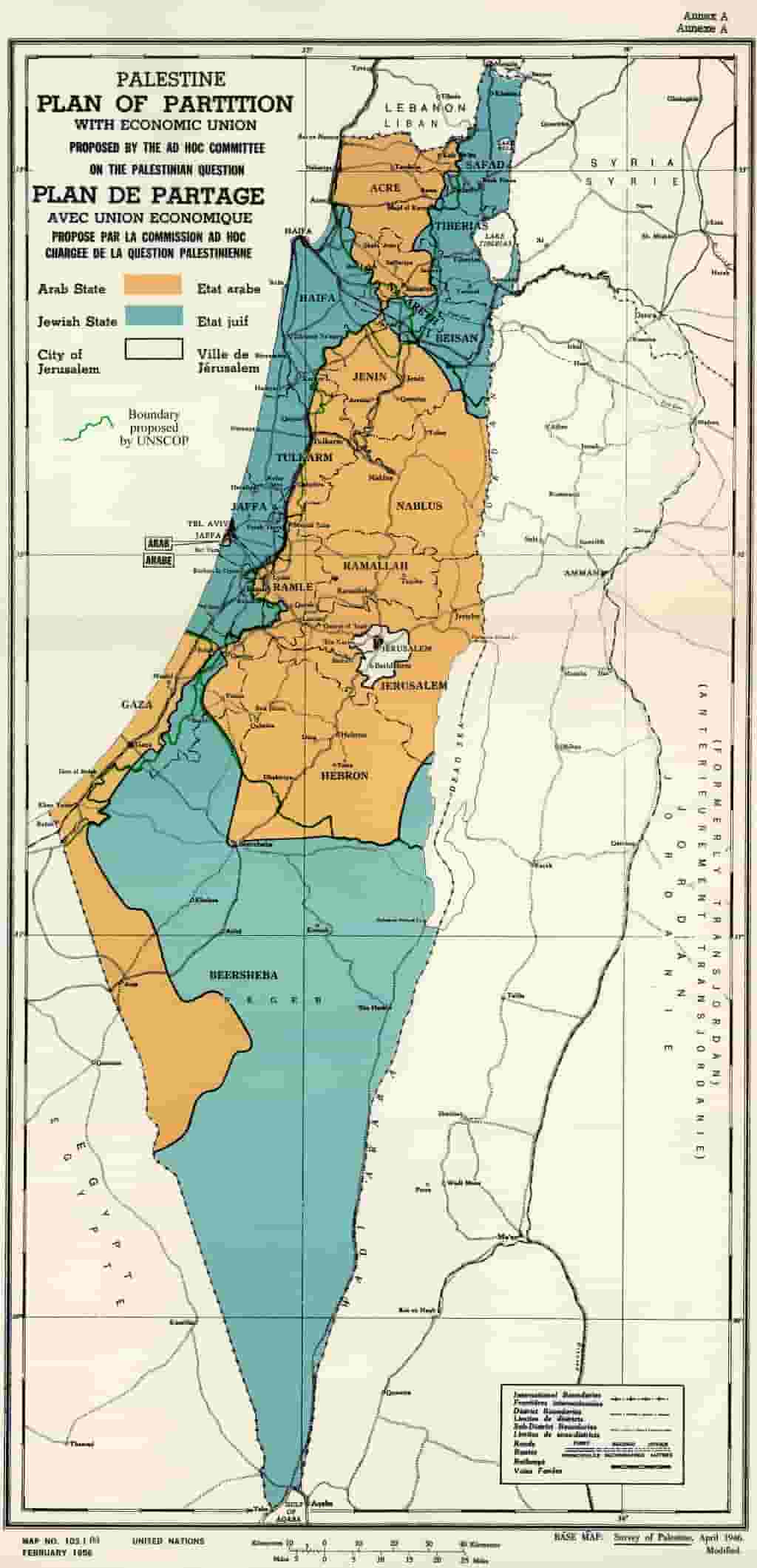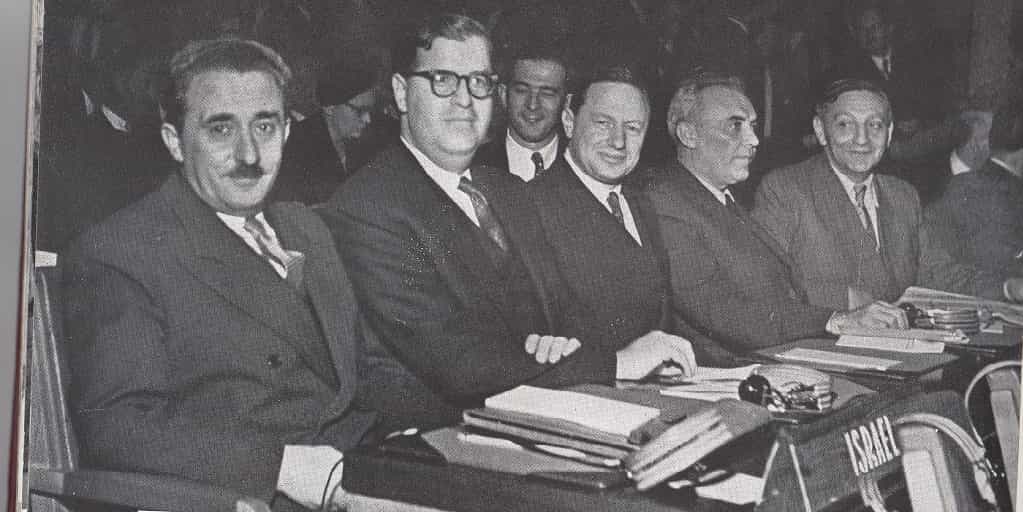Tomorrow is the 29th of November, which is a very special date in history. Why? Well, because on this day sixty- eight years ago (November 29, 1947), the United Nations (UN) voted in and passed a particular plan, or resolution. The Partition Plan of the land between the Jordan River and Mediterranean Sea, then called Palestine. It was a tremendous event that changed history and the path of Israel today.

But what led to this vote?
What is going on that could lead to something so huge? Well, let’s start at the end of World War I. The Allied Powers have won the war. As a result, the British and the French divide up the Middle East into French and British Mandates. Here I have to clarify the meaning of a Mandate. It is ‘a commission given to a nation to administer the government and affairs of a former Turkish territory or German Colony.’ (Definition of Mandate). Mandates prepare these countries for independence, stability, and statehood. They never intended to stay and rule over the land forever. And from whom did this official order come? From the League of Nations (forerunner of the UN).
So in 1917, the British take over the lands of Palestine and Jordan, while France had a mandate over Lebanon, and Syria. For the next thirty years there is British rule in Palestine. While it is one of the shortest periods within Israeli history, yet its impact can still be felt today. The British publish the Balfour Declaration, in 1917(the same year they begin the Mandate in Palestine!). The Declaration, named after Britain’s Foreign Secretary Arthur James Balfour, stated British support a Jewish state within the Jewish homeland. The exact words are ‘His Majesty’s government view with favor the establishment in Palestine of a national home for the Jewish people, and will use their best endeavors to facilitate the achievement of this object….’
In addition, thousands of Jews came and moved to the land. They created farming communities in the north, and cities in the center of the country. All of a sudden, the Arab majority living here is experiencing a shift in their reality. This reality shift threatened their stability and the leadership began to pressure the British Mandate to cease the Jewish immigration. Thus the British publish the White Papers, restricting Jewish immigration into Palestine to 10,000 Jews per year.
Furthermore, interwar years are tense times, and the Middle East was no exception. Because of these major documents, the British have found themselves stuck between a rock and a hard space. On the one hand they have publicly favored the creation of a Jewish homeland. On the other hand they have to keep the Arab population calm, and publish the White Papers. How do you balance these two sides? The tensions between the Jews and the Arabs of Palestine boil over and violence erupts. Bad news bears for the British Mandate.
Different plans were offered to create peace between these two peoples.
After WWII…
New laws are put in place. The Mandate issues a curfew. Do you think anyone listened? …. No. The Mandate created a law stating no one can carry any firearms. Do you think anyone listened?… No. All the while the Jewish community raced to establish more and more farming communities, towns, and cities.
By mid 1947, it is such a world wind of political events, tensions, and violence that the British say ‘enough is enough.’ They hand deliver the issue of the Mandate of Palestine to the hands of the UN. A special committee comes to Palestine in May 1947 to look around and talk to the people living in the land. The committee is called the UN Special Committee on Palestine (UNSCOP). The Jewish communities proudly took UNSCOP to show them how they have made the Negev green, how they have created a water carrier, all of the state building institutions created. The Arab community seemed more suspicious.
After much deliberation, UNSCOP comes up with this plan here:

Leading Up to November 29, 1947
Consequently, what we see in the map is essential a two-state solution. Really, this idea isn’t so new. The orange would be an Arab state; the blue would be a Jewish state; the purple section in the middle is Jerusalem and the surrounding area, which would be under international control. THIS IS WHAT THE UN VOTED ON November 29, 1947.
Now, it is in the best interest of the Jewish leadership to get the proposal passed. Why? If you look at what the Jewish State would like, it isn’t such a good offer. Why is that? First of all, the majority of the country is very narrow, which means they don’t have a lateral movement, especially in times of war (which they were in at the moment). Second, the Jewish State is three separated pieces. This would make it very difficult to travel, and function as a state. Imagine if that was the case where you lived. How would you get to see your family living in a different section?
Furthermore there is the issue of Jerusalem. Look at where it is on the map. It was surrounded by the territory of people the Jewish population was fighting. How can they get to the holiest site in Judaism? The answer is that it is next to impossible. So forget about seeing the Western Wall, the Temple Mound, and some of other holy Jewish sites in the Jerusalem. And finally note the southern half of the Jewish State. It’s all desert; the
Jews have just spent the past one hundred and some years settling the land. But most of that time was in the northern part of the country. There were a few towns in the Negev, but it is mostly unsettled, with no water sources, no sanitations, etc. Finally, half of the Jewish State is in the Negev. What are they to do with it?
So why would the Jewish leadership want this plan? Because after thousands of years of not having a homeland, after all of the plans that were offered, after all the work they had done to establish a home, it is better to start from something than nothing.
The Arab leadership didn’t agree with this plan. They ruled the land for twelve centuries. Therefore, why divide it and give some up?
So this plan is proposed late in 1947, and what happened in the weeks leading up to the event? Jewish and Arab leaders rushed to New York in order to lobby various leaders to vote in their favor. When the Resolution was almost set for November 25, it seemed it would to fail. As a result, it was postponed another four days. After an extra political push, the world took a vote on November 29, 1947 over the partition of Palestine.

What Happens on November 29, 1947?
Oswaldo Aranha of Brazil presided over the meeting on November 29, 1947 with Norwegian Trygve Lie, secretary general at his side. With the meeting beginning, each country’s representative was to vote ‘yes,’ ‘no,’ or ‘abstain.’ Remember they were voting on an Arab state, a Jewish state, and an internationalized Jerusalem in what was then called Palestine. People around the world were stuck to the televisions and radios in order to hear the results. One by one and in alphabetical order the countries gave their answer. One by one Jewish and Arab leaders tallied the votes. When it finally came to France’s turn, everyone held their breath for they were at the threshold of passing such an important resolution. Many had expected France to abstain, and yet they voted ‘yes.’ The supporters of the Partition Plan sprang to their feet and cheered.
Conclusion of November 29, 1947
Finally, it would take Aranha rapping the gavel to quiet them down. In the end thirty- three countries voted yes, eleven abstained, and thirteen voted no. The Partition Plan was passed! The afternoon of November 29, 1947 was a game changer in history and politics until today all these years later. Golda Meir, a Zionist leader at the time (and later Prime Minister) came out to the balcony of the Jewish Agency building and said to the crowds “ For two thousand years we have waited for our deliverance. Now that it is here it is so great and wonderful that it surpasses human words. Jews, Mazel tov [Congratulations]!” And in conclusion, a new chapter in the world begins.





